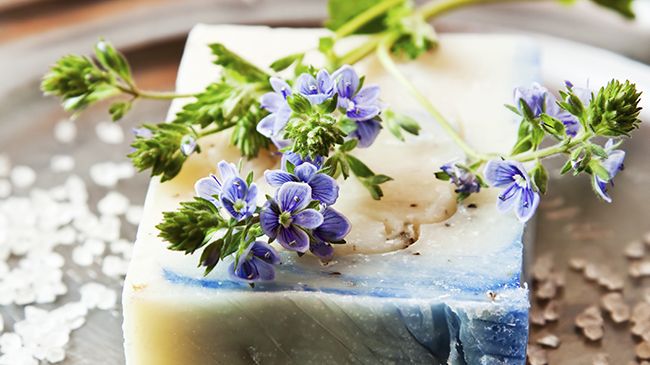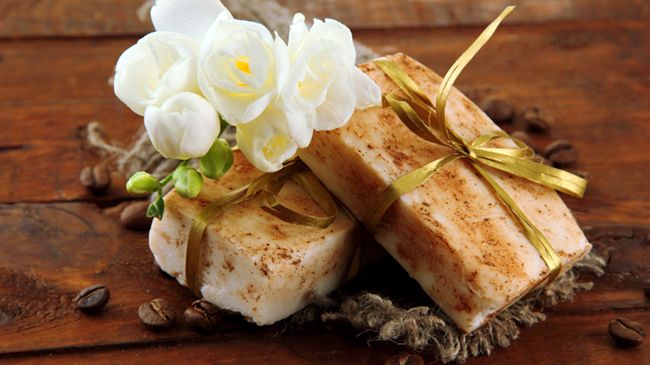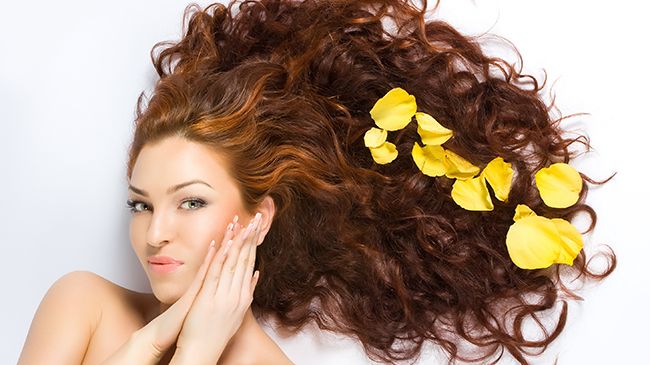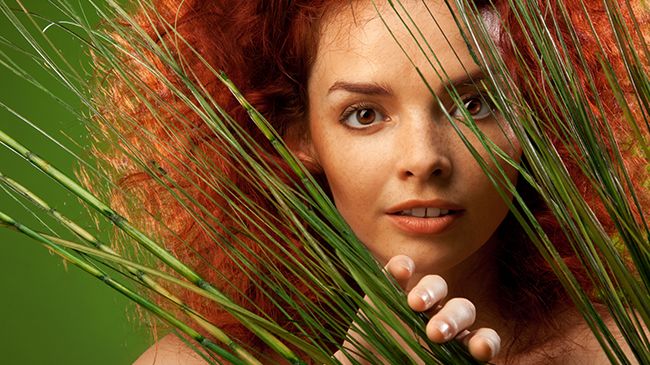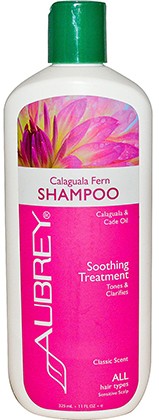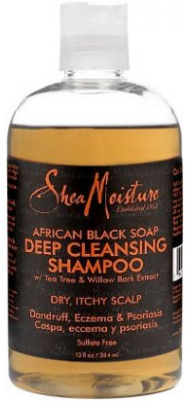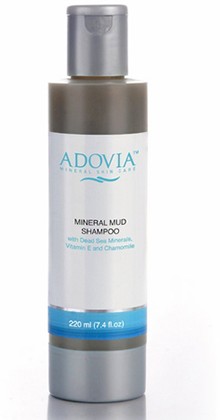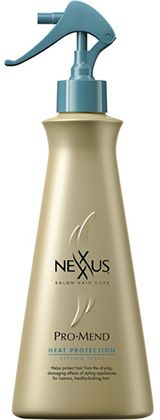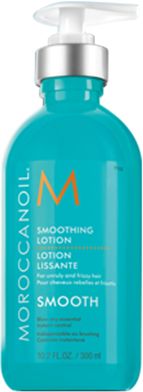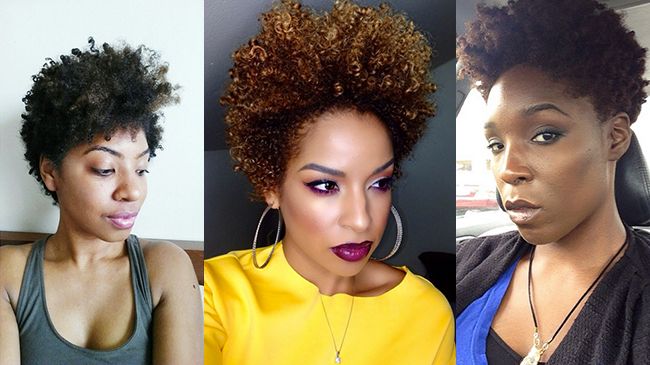Search Results: Sabrina Perkins

There are many regimens, techniques, and products that you tend to leave behind once you become a natural-haired woman. You leave the relaxer chemicals, six-week trims, and curling irons behind, as you no longer have a use for them. There are some you may hold onto as they still have a space in your heart like flat irons, setting lotion, and rollers. Rollers? Yes, rollers! They are magical creatures that will give your hair bounce, shine, and silkiness, and while often times they are associated with relaxed hair, they do have a place for curls, coils, and waves.
Natural hair is versatile and practically an open canvas for any style you hope to achieve. It can even look like relaxed hair with the right technique and yes, that goes for all hair textures, so do not think you cannot achieve silky hair that will blow in the wind. There is nothing wrong with embracing your curl patterns, but for the natural who loves variety can have it all with the right rollers, setting lotion, technique, and creativity.
Why Use a Roller Set?
- Achieve looser curls, tighter curls, and stretched hair without the need for heat
- Use a hooded dryer or air-dry instead of using a blow-dryer or flat iron
- Use the same magnetic or cold perm rod rollers you used while relaxed
- Your style will last much longer than it would if achieved with heat tools
What You’ll Need
The perfect roller set starts well before you add the rollers. It starts with the right cleanser, conditioner, moisturizer, and setting lotion. For the best roller sets start on wet, clean hair. You want the hair to be free of dirt and old product buildup so make sure to use a clarifying shampoo or a really good cleansing co-wash.
The Products
A deep condition (e.g. Curl Junkie Curl Rehab Moisturizing Hair Treatment“> should follow your cleanse. You can leave your treatment or masque on for 5 min or for 15 min with a plastic cap for extra conditioning. Rinse and now it is time for the leave-in conditioner and styling products. For the leave-in conditioner you can use Karen’s Body Beautiful Sweet Ambrosia Leave-in Conditioner, as it is great if you choose to sit under the hooded dryer. For setting lotion you can go with old faithful that every relaxed woman will know about, Lotta Body Setting Lotion. For smoother roots try your favorite gel just on the roots. We suggest Eco Styler Olive Oil Styling Gel. Even if you choose not to use it all over it will be great for slicking down your edges once hair is dry and down.
[prodmod]The Rollers
The rollers that seem to work the best are magnetic rollers. The smaller the roller, the tighter the curl, and if youchoose to use smaller rollers on longer hair, then your drying time will increase. Here are some rules of thumb: make sure you do not pick a roller that is too big, make sure each section is tangle-free and the hair lays smoothly on each roller, and do not remove the rollers until your hair is completely dry. If you release your style while your hair is still damp, your hair will frizz and your curl pattern will revert. Roller paper is not necessary but if you have it then give it a try and see if you like it.
Before You Go to Sleep…
There are a few ways to preserve your hair during nighttime. You can either go super old school by wrapping it up at night or you can pin your curls in place (pin curl”> to ensure your curls last around a week or even longer. Make sure to wear a satin bonnet to help preserve the hair. In order to keep your edges laid you can use edge control as reinforcement.
And When You Wake Up
If you chose to wrap your hair, then comb out your wrap with a wide-tooth comb. If you chose to pin curl your hair then you can either use your fingers to style or use a wide-tooth comb. You may want to add a few drops of your favorite oil in the palm of your hand to smooth any stray hairs or just take down pin curls to keep sections smooth. You can also smooth some of the oil onto your wrap style for the same reason.
Jess from MahoganyCurls has a great video on roller setting that allows you to see the technique and the finished product.
What are some of your roller set tips?
What is Crisco
If you do not know, Crisco is a shortening produced by the J. M. Smucker Company and introduced by Proctor & Gamble in 1911. It is made from vegetable oil and the ingredients include soybean oil, fully hydrogenated palm oil, partially hydrogenated palm oil and soybean oils, monoglyceride, diglycerides, TBHQ, and citric acid (antioxidants”>.
But We’re Not Eating It…
The good thing is we are not talking about eating or cooking with it but rather using it in our hair. According to Livestrong, Crisco has been recommended by some dermatologists for dry skin and other skin conditions like eczema. It is quite effective at sealing moisture in your skin and hair. Vegetable shortening has been used on the body for centuries, so it should not come as a surprise it has resurfaced again for hair.
Now that you know that Crisco is just an oil in solid form, are you ready to use it in your mane? If not, are you just intimidated by that big blue can that many remember seeing their mothers and grandmothers having on the kitchen counter? No one is saying scoop out a handful and slather it in your head. There are mixes for this effective and reasonably priced sealant, so do not shy away just yet.
I think the most popular one has to be from Calvis Williamson, the creator of the Sugar Foot Hair Short’nin that has the wonder ingredients soy bean and palm oil. She is lovingly called “the Crisco kid” and Facebook natural hair groups have been talking about her DIY styling mix for a while. She made a video creating it prior to selling her Sugar Foot Hair Short’nin and her ingredients include Crisco, gel, conditioner, glycerin, and extra virgin olive oil. She is far from alone, as more naturals are loving and mixing Crisco into some amazing concoctions. Naptural Nicole created one to that is worth mentioning as well as trying.
DIY Crisco Mix
Ingredients
- 1-20 oz pkg sticks of Crisco (1 stick per mixture”>
- 3 tbsp- extra virgin olive oil
- 1/4 cup 100% colorless aloe vera gel
- 1 tsp- essential oil fragrance
- 1 tbsp- shea butter (optional”>
- Mixing bowl
- Spoon
- Storage container (do not store in Crisco can”>
Directions
- Slightly softened in the microwave.
- Mix shea butter thoroughly and add your oils and gel and stir. The consistency of the product should be a thick cream. The product should run when placed on the back of your hand.
- Apply to clean, freshly washed/cowashed hair and style.
Watch the Video
There are several ways to create a Crisco mix that will benefit your hair and skin and all you have to do is use what you love or whatever you have in the kitchen. What may seem weird may just be a different way to achieve the same results: happy, healthy, and well-moisturized tresses, and that is worth thinking outside the Crisco can.
Have you tried Crisco in your hair?
Don’t Be Intimidated
A surfactant or detergent molecule is one that possesses the trait of having one distinct portion of the molecule that is polar and hydrophilic (water-loving”>, and one portion that is non-polar and hydrophobic (water-fearing”>. To many this sounds intimidating but it can be merely a challenge once you understand what you need is a cleansing product that will do what it is intended to do without drying out your tresses. No one needs or wants that type of headache, so before you start whipping up everything in your kitchen we need to understand what we are doing and why.
Shampoos can be drying, especially if they contain harsh surfactants like sodium lauryl sulfate (SLS”>. This additive that makes your cleansing products foam has been linked to cancer, neurotoxicity, organ toxicity, skin irritation, and endocrine disruption according to Livestrong. It is an emulsifier and foaming agent but it is not necessary to clean your hair. If you are already squeamish about it then no worries because what is the point in creating a product and making it harmful to your hair? We are not in that type of business.
Why a Shampoo Bar Might Be Better than Your Shampoo
Creating a shampoo has its own benefits, but creating a shampoo bar has even more. They tend to be free of silicones and sulfates and chock-full with natural oils. Many using them love the effects they have on their tresses and they gently cleanse without drying out or harming the hair. Another benefit is there is no SLS, and although shampoo bars have negatively charged surfactants, Curl Chemist says “The difference is that the polar head group of the molecule is a carboxylate, rather than a sulfate (R-COO-Na+ vs. R-OSO3-Na+”>, which results in a milder surfactant.” Lye is used in the making of shampoo bars but calm your nerves. It is completely consumed in the chemical reaction and will not irritate or burn your hair or skin. Be very careful when working with lye and use a lye calculator as all the shampoo bar makers suggest, like Soap Cal.net! Now, are we ready for some amazing recipes?
Horsetail Shampoo Bar Recipe for Dry Hair
So many curlies, naturals, and wavies have dry hair so it makes sense to find a recipe that is created to combat that popular issue and with winter coming we are more than ready for the task.
Ingredients
- 8 oz coconut oil
- 8 oz olive oil
- 8 oz organic, sustainably-sourced palm oil
- 4 oz shea butter
- 2 oz cocoa butter
- 3 oz castor oil
- 10 oz handmade horsetail water infusion
- 1 tbsp horsetail powder
- 2 oz argan oil
- 2 oz essential oil blend of ylang ylang, bay, clary sage, sweet orange, and cedarwood
Shea Butter & Citrus Shampoo Bar for Oily Hair
The Citrus in this shampoo bar is perfect for breaking up excess oils.
Ingredients
- 5 oz olive oil
- 3 oz castor oil
- 2 oz shea butter
- 4 oz coconut oil
- 2 oz avocado oil
- 2 oz lye
- 6 oz water
- 1/2 oz lemon essential oil
Therapeutic Homemade Shampoo Recipe for Normal Hair
Ingredients
- 9.5 oz (270ml”> mineral water
- 2 chamomile teabags
- 24.5 oz olive oil
- 3.5 oz sweet almond oil
- 2 oz beeswax
- 2 oz creamed coconut
- 4 oz lye (sodium hydroxide/caustic soda”>
- 4 tsp bergamot essential oil
- 2 tsp lavender essential oil
- 1 tsp geranium essential oil
- 1 tsp rosemary essential oil
Do you make shampoo bars? Do you want to?
Both hair and nails have living parts, but those living parts are beneath the skin. Hair and nails grow out from a matrix, which for our hair turns into our hair follicle; for our nails it is the nail bed or nail plate. Audrey Sivasothy says, “Cells grow out from the matrix, and older cells eventually are pushed out by newer cells growing in. The newer cells cause the older cells to become compacted, and as the cells are further removed from their blood supply, they form keratin proteins and begin to harden into the hair fiber, or nail, that we see.” Hair and nails are the results and are known as keratinization, which is what makes our hair and nails grow.
Health and Hair Growth
Our hair and nails are quite telling of our health, and doctors can often tell the health of a person by the condition of either. Many diseases will and can cause hair loss as well as dry, brittle, dotted, yellow, or irregular nails. Livestrong attributes healthy nails to a healthy thyroid, healthy kidneys, and balanced hormones. Poor blood circulation, malnutrition, and some medications slow down the growth rates of your nails and hair. Diseases or treatments for them (e.g. chemotherapy”> can negatively affect your hair and nail growth too.
Honestly, there are several factors that contribute to the growth of both your nails and hair like sex, age, diet, exercise, and even the time of year. Sivasothy also shares that summer is the fastest time for nail and hair growth, yet scientists do not understand why. Before children hit puberty they have nails that heal and grow back much faster than adults. How Stuff Works says that men’s nails and hair grow faster than women’s, except during pregnancy when there is a hormonal boost of metabolism and blood circulation. New keratin is created and supported by numerous types of nutrients and eating a diet high in protein (e.g. meat and leafy greens”>, which your body to breaks down into amino acids and redistributes throughout the body. Remember, you are what you eat.
Did You Know…
Some funny facts about nail growth are that nails grow faster on the hand that is most dominant or used more often, pinkie nails grow the slowest, and index fingernails grow the fastest. Fingernails grow about four times faster than toenails and adult nails will grow about one-tenth of an inch a month according to How Stuff Works. And as you may have guessed by now, hair grows much faster than fingernails and toenails with about ¼ to ½ in a month or 6 in a year. Hair grows faster than other tissues in the body other than bone marrow.
Growth Boosters
There are tons of products on the market that claim to boost your hair and nail growth, and most have proteins like biotin and B6 and will strengthen your hair and nails, whether it is consumed through a pill or a meal. Livestrong emphasizes that sulfur in the body will produce keratin and vitamin A to help your body absorb protein correctly and aid in the physical composition of your hair and nails. Vitamin C, B2, B7 and vitamin E all aid in healthy tissue and will make your hair stronger, healthier, and grow at amazing rates; all of which can be found in foods instead of a supplement. I am not knocking supplements at all, as I use them, but never underestimate the power of eating right and exercising.
Hair grows faster than nails but for maximum growth and strength stay healthy, stay young (at heart”>, and keep eating those veggies!
University of Maryland Medical Center says it has antibacterial, anti-inflammatory, and antiviral properties so this is great for an irritated scalp. There seems to be some promising news for men and women suffering from thinning hair or hair loss. Some groups who follow natural healing feel St. John’s Wort has healing powers. With its regenerative properties it is believed to stimulate hair growth for people whose hair has been affected by radiation treatments, pulling, or other damage to the scalp. The Cancer and Natural Therapy Foundation of Australia has a scalp oil recipe that is great for encouraging a healthy scalp that is noted below.
NYU Langone Medical Center notes that in a study with patients taking antidepressants, hair loss was associated with St. John’s Wort, but the study also mentions that standard antidepressants may also cause hair loss at times as well, so it is inconclusive if the plant created the hair loss. The bottom line is that the full benefits of this plant are still being explored despite its usage to treat depression and for hair loss remedies for some. If you are on the fence about taking it as a supplement there are hair products to try that may be to your liking.
Phyto Phytonectar Ultra-Nourishing Brilliance Shampoo
St. John’s Wort extract, water, PEG-4 Rapeseedamide (fatty acid”>, PEG-7 glyceryl cocate (fatty acid derived from coconut”>, and disodium cocoamphodiacetate (synthetic surfactant”> make up this highly concentrated botanical shampoo. Watch it restore much needed moisture to your tresses and gain back strength, softness, and shine.
ECO-lina Fito Beauty Natural Shampoo
Water, sodium chloride (salt to thicken”>, cocamide DEA (chemically modified form of coconut oil”>, tea tree oil, and St. John’s Wort come together to strengthen the hair shaft. Your hair’s surface layer cells will be restored and hair growth is stimulated with the elaborate combination of herbs. Gently cleanse your hair and scalp and improve micro-circulation of blood to the scalp.
ECO-lina Fito Beauty Natural Conditioner
Water, fatty acids, cetrimonium chloride (emulsifying or conditioning agents”>, sunflower oil, aloe extract, and sweet flag extract create a powerful leave-in conditioner. Strengthen your strands, stimulate hair growth, and improve microcirculation of blood in the scalp to strengthen your hair’s overall structure.
St John’s Wort & Basil Oil Scalp Massage
For the DIYers in the group we have a scalp massage that claims to help with hair loss as well as being quite relaxing. It is a powerhouse massage oil with fresh St. John’s Wort, fresh basil, olive, basil, and vitamin E oils.
The verdict is not in yet on whether St. John’s Wort can definitely fight against hair loss but with all its amazing antibacterial, antiviral, and anti-inflammatory properties it is worth trying.
Have you tried St. John’s Wort and if so, what was your take away?
Well, perhaps it is but as I tend to lean towards science when it comes to determining the correct course with hair care products, it is no surprise that I respect and listen two these two: The Natural Haven and The Beauty Brains. Here’s what they have to say about the cheaper brands versus more expensive ones:
“There are many cheap, mid range and expensive products that work in the same capacity. We do not have to spend our hard earned cash on $30 products when a $2 will do the same (Read the first five ingredients people, many will have identical lists!”>.” –The Natural Haven
Even the Beauty Brains has this topic in their popular article, Seven Ways You Waste Money When Buying Beauty Products, where they find salon hair products are no better than grocery store brands.
In Professional vs. Drugstore Products, Janelle Sands discusses the four factors that should be assessed when purchasing a hair care product: know the current state and the goals of your hair, know if you need professional or personal instruction, consider concentration of product against the price, and know the quality and quantity of the ingredients. Of course in a nutshell checking the back of the product for the first five ingredients (after water if it is the first ingredient”>, trial and error, and using common practices that most women use for hair care are great ways to figure out what will work best for your tresses.
Another factor is the ingredients being used. Natural oils and exotic butters that can only be plucked from faraway places on this earth tend to cost more than what can be found in your own backyard. Most curlies who are a stickler for all natural ingredients (and within the first five to six ingredients”> are willing to pay a tad more than your regular $5 bottle of conditioner, but that does not mean I am willing to pay for a $30 bottle either. That just means some ingredients are worth the higher price and only the consumer can determine if that higher price is worth digger into their wallet to obtain.
So, can we get a simple yes or no? Some product formulators say that products with lower prices are not any worse than products with higher prices while some hairstylists say that products with lower prices are not of the best quality and therefore may not perform as well. It really boils down to who the consumer chooses to listen to. For the vast majority of us it depends on the product, your hair, and your wallet. What may seem expensive to me may seem cheap to someone else. Furthermore, if you are adamant about buying what works for your hair regardless of the price than you may not consider price as an issue. And finally, if you are like my struggling college student daughter then price means everything and you buy what you can afford…period! The determining factors will depend on your hair, your financial situation, and ultimately your priorities.
What say you curlies, coilies, and wavies! Are cheaper products really any worse than the more expensive brands? What do you consider expensive?
“The Loc Soc”
ItsCinnaMe shares a video on the versatile and gorgeous Loc Soc that was originally created for loc wearers for sleeping, keeping locs out of the way, and protection. It soon gave way to style and now many naturals are rocking them and for good reason. They are gorgeous and perfect for the awkward stage in your natural hair journey. I promise you will be eager to get one (or more”> when you see how cute and simple they are for your tresses, and with the cooler weather coming up it is the perfect time to rock them. They can be found at Soclocsoc.com.
Crochet braids
Crochet braids are so big right now and for good reason. They make an awkward stage invisible to the world with a protective style that needs no glue, adhesive, or hooks. Crochet braids provide style versatility, the hair can be synthetic or human, and as long as you do not neglect your tresses underneath you can breeze through your awkward stage. In this tutorial AGirlsCurls shows us ten styles (that’s right ten”> that are great for the curly crocheted hair.
The New Puff
Ragin from brings an easy, funky take on the regular old puff that sometimes we tire of. These styles can be achieved in minutes with few tools. Whether you have freshly washed hair or bed head ‘fro, check out these style when you are on the go.
Tools and Products
- Gel
- Brush
- Skinny headband
- Small ouchless rubber bands
- Spray bottle mixture
- Bobby pins
- Edge control (optional”>
Directions
- Spritz hair with spray bottle mixture
- Apply gel to edges and nape
- Section out a front piece from flat twisting for French braiding
- Brush and smooth rest of hair up into a puff
- Apply stocking legs or headband to puff
- Fluff & spray puff
- Apply gel to edges for smoothness (optional”>
- Tie scarf around base for at least 20 min to set style
Flexi Rod Set
TheChicNatural reminds us that flexi rod curls look great on any length. As you wait for your hair to grow to medium length, this style is great to rock and will last for days if properly maintained at night.
Tools and products
- Flexi rods (The small the rod, the tighter the coil, the longer style longevity”>
- Leave-in conditioner
- Styling lotion mixed half and half with water
- Denman or paddle brush
Directions
- Start on freshly washed hair
- Section small pieces of hair for flexi rods
- Apply leave-in conditioner and work in
- Spray sectioned hair with setting lotion and water mixture and work in
- Brush with Denman or paddle brush and brush hair smooth and detangled
- Apply flexi rod from the bottom. Make sure your ends are smooth and fully wrapped around flexi rod and roll hair up to roots and bend the rod upward to assure the rod does not unravel.
- Repeat until the whole head is complete
- Allow your hair to fully dry before unwrapping flexi rods (make sure to have oil on hands to combat frizz”>
- Fluff to desired fullness
How did you style your hair at an awkward length?
According the Insider Health, 70% of this grassy wonder is comprised of silica, and if your eyes are lighting up right now then I know you are fully aware of its importance. Vital Health Zone says that your the bones, nails, hair and skin need silica to stay in good condition and it is useful in counteracting the effects of excessive aluminum in the body. It also improves blood circulation, which then encourages growth.
Bamboo extract comes from the leaves and stalk of the bamboo, and when in shampoo it works hard at removing buildup. Some products with bamboo extract deliver nutrients to the hair follicle to further improve the vitality of your strands as it is being produced. This hair strengthening wonder can be taken in powder or pill form, but do not fret if you prefer trying it in your hair products because I have you covered!
Alterna Bamboo Smooth Anti-Frizz Conditioner
Water, cetearyl alcohol, cyclopentasiloxane (conditioner, increases slip”>, dimethicone (silicone”> and hydrogenated castor oil/sebacic acid copolyme (emollient”> make up the first five ingredients. This deeply penetrating conditioner will smooth and strengthen your strands while taming frizz and retaining hair color.
Alterna Bamboo Luminous Shine Mist
This popular styling mist is made up of fennel seed extract, saccharomyces (lysate, copper, zinc”> ferment, hemp seed oil, dimethylcetylaminohempseedate, and orange oil. Gain shine from this weightless finishing mist that will polish all hair types and add mirror-like shine. Retain your hair’s color and nourish your strands while eliminating flyaway hair all from one little bottle.
Gleau Beautifully Bamboo Natural Leaf Tea
If you are all about getting right to the source than you will love the Gleau bamboo tea leaves, which are organically grown bamboo leaves. Relax and indulge in your beauty tea as you drink nutrients.
[prodmod]Nubian Heritage Indian Hemp & Tamanu Strengthen & Grow Moisturizing Co-Wash
Deionized water, coconut oil, shea butter, mango seed butter and cetyl esters (lubricant”> make up this 2014 Editor’s Choice co-wash. Get stronger and hydrated strands while staying soft and frizz-free.
Nubian Heritage Indian Hemp & Tamanu Grow & Strengthen Treatment Masque
Deionized water, shea butter, hemp seed oil, tamanu oil, aloe barbadensis leaf extract, cetyl esters, panthenol (Provitamin B-5″>, and bamboo extract create an all-natural hair masque ready to save your dry strands. This intensely conditioning treatment will fortify and strengthen your hair.
Are you more of a DIY’er? Our writer Jenell B. Stewart has a great bamboo infused hemp seed oil recipe that will have your tresses stronger and happier.
Have you tried bamboo extract?
Let’s not even pretend you do not understand what I am saying. You, yes you are the biggest culprit for your tangled washdays. I am calling you out (myself included”>, because we can make them easier if we take the time to ensure they run smoother. Here are a few ways to avoid tangles and simplify your washday.
1. Do not put off washday
Let me say this one more time for the people in the back row, yea, you in your feelings right now, I’m talking to you! Do not put it off until you have a tangled mess to wash! How many of us have procrastinated washday because we are either tired, forget, dread it, or feel too lazy marinating in our own funk to care? This is part of the reason washday becomes a chore. Putting it off is not only keeping your hair dirtier longer, but you are allowing the tangles to accumulate.
Dr. Oz says the average person loses anywhere from 50 to 100 hairs every single day and about 100,000 shed hairs follow a predictable cycle. They are either growing (anagen phase”>, not growing (catagen phase”>, or resting (telogen phase”> and then they are released during the last phase.
These hairs that will shed do not stop when you do not feel like washing your hair. They only grow more intertwined throughout the length of your attached hair.
No one is suggesting that you detangle daily, but if you put it off then you are allowing the shed and unshed hair to become more densely tangled. Every single time I put off washing my hair I regret it. If you are reading this article with hair that has not been detangled in a month, here are some tips to help what could be awaiting you.
2. Pre-poo
A pre-poo is an oil treatment that is applied prior to shampooing your hair. Favored oils for most naturals include olive oil or coconut oil, but you can select whichever oil you like. A pre-poo will help to dissolve your tangles, and the longer you let it sit (15-30 min”> the easier it will break down the tangles and allow your washday to become a breeze.
3. Section
I cannot stress this enough! I understand if you are in the TWA stage and it may not be necessary, but when your hair is no longer a TWA and you notice more tangles when washing, it is now time to make a change – this typically occurs when the hair is around 6 inches in length. Washing in sections allows you to be more productive by allowing you to concentrate on smaller portions.
4. Use tons of conditioner
Conditioner is your friend. Love it, cherish it, and use it! Washday is not the time to be stingy, and if you already incorporate the Curly Girl Method or the Tightly Curly Method then you already know the power of conditioner. Conditioner allows you to remove the tangles successfully without yanking out gobs of hair. Adding a few drops of oil to your conditioner will also help in eliminating tangles without ripping out strands of hair. And please, do not forget to detangle starting from the ends and working your way up to the roots.
5. Co-wash
Not everyone is into co-washing and I understand. Despite your misgivings on the subject, if you are noticing more tangles with shampoo, then you may want to give co-washing a try. Shampoos are meant to cleanse and many (but not all”> contain harsh surfactants that alter the pH of the hair and induce tangles as you massage the scalp. Co-washing is just using daily conditioners or co-wash formulated products (such as As I Am Cleansing Co-Wash and DevaCurl Low Poo“> to gently cleanse while also conditioning your tresses. I have tried the sulfate-free shampoos but my hair does not like the stripped feeling, so I jumped on the co-washing bandwagon and never looked back.
Trying one or more of these tips should really cut down on your tangles. Remember to take your time so you are not tugging at your hair.
Has anyone tried any of these methods? If not then what are you using to doing to make your washday easier?
Dandruff is the dreaded “D” word to many when it comes to hair. It is an annoying issue that some naturals will have to deal with at least once during their journey. Medical News Today says that dandruff is a common condition of the scalp that causes flakes of skin to appear and is marked by itching. The exact cause of dandruff is unknown. However, most experts do agree that it is not caused by poor hygiene.
Despite it not being easy to treat, it can be controlled and calmed if using the right products and techniques. Nothing is worse than thinking you need to scrub the dickens out of your scalp to get it cleaner when all that harsh scrubbing will in fact make it worse. So, if you suffer from dandruff you do not have poor hygiene. Dandruff is a common condition because our skin cells are forever renewing themselves, and as the new ones are being renewed in our scalp the old or dead ones are pushed to the surface and then out of the scalp. Common ways to treat dandruff would be the use of anti-dandruff or anti-fungal shampoos and most will have one or more of these ingredients in them: zinc pyrithione, selenium sulphide, coal tar, ketoconazole, salicylic acid, and tea tree oil. What really put dandruff at bay for me was doing the Curly Girl Method . If neither of those remedies are attractive to you, then check out our top 10 list of shampoos for fighting dandruff.
Top 10 Dandruff Shampoos
Hair porosity is fundamental to understanding your hair type. It may not get as much attention, but knowing your hair’s porosity will make caring for your tresses simpler and retaining moisture easier. With curly hair, moisture retention is top priority. Hair porosity is how well your hair will absorb and retain moisture, oils, or chemicals (like color”> and is affected by the elasticity of one’s hair cuticle. The cuticle’s condition determines how easily moisture will pass in and out of your strands, and yes it does go both ways meaning your hair’s cuticle can receive moisture and it can lose it.
There are three types of hair porosity: low, medium, and high.
There are three types of hair porosity: low, medium, and high. Genetics is the biggest factor that will determine your hair’s porosity when at a healthy state. Other factors in hair porosity have less to do with genetics and more with external influences like exposure to chemical treatments, heat styling, and environmental elements. High porosity hair has holes and gaps in the cuticle layer, which allows moisture to be quickly absorbed and quickly released. Please do not make the mistake of thinking high porosity hair cannot retain adequate moisture without losing it all. It takes extra work and knowledge to find the right routine and techniques to keep your hair healthy during the colder months. Here are a few tips that will help.
1. LOC method
The L.O.C. method works best for tightly coiled naturals (Type 4“> and high porous hair since both crave water. This method is perfect for getting the right amount of moisture in and keeping it in by layering the products in a specific order to receive maximum moisture retention. Liquid or leave-in conditioner will add the moisture, the oil will seal it, and the cream, butter, or even gel is just another layer of sealant. You may be wondering why sealing is necessary if your moisturizer is formulated with oil and Janelle elaborates on the importance of sealing.
2. Protein treatments
They are great for year-round, but if you have been slacking on them while frolicking in the sun this summer, then you really should incorporate them during this winter. High porosity hair is more vulnerable to dryness during the winter and protein treatments give your strands strength by temporarily patching up the holes in your hair’s cuticle layer. Monthly treatments are great during winter, but do not use protein treatments as a moisturizer or use them frequently like you would a moisturizer. Too much protein is just as bad as not using it at all and can make the hair brittle and cause it to break.
3. Gentle cleansers
Shampoos clean your tresses and the surfactants in them do the job effectively. The problems some (not all”> surfactants is they (e.g. sodium lauryl sulfate”> can strip the natural oils out and even make worsen the holes and gaps in high porosity hair. There are naturals who love shampoo and swear by gentle and moisturizing shampoos and forgo co-washing. With the dryer weather it just does not pay to use products that can potentially make your hair drier than need be, so the cooler months may be a good time to start reincorporating co-washing.
4. Heavier oils and butters
For effective sealing during winter, try heavier products like shea butter, olive oil, avocado oil, or castor oil. Use products that have them in the first five ingredients to ensure you are getting the full benefit of the heavier oils. They not only help with sealing your porous tresses, but they add that protective layer your strands may be lacking.
How do you care for your high porosity curls, coils, and waves in the colder months?
There is a fine art to heat styling. I know thousands, if not millions of women heat style regularly, and it is important to approach heat cautiously. Sister Scientist gave us the breakdown of various heat protectant options in order to avoid frying your hair. The blow-dryer is a great tool to stretch your natural hair for a gorgeous blow out and even a stretched wash and go, but you should not rely solely on the appliance for a flawless finish. Smart heat styling is also about the products you use on your hair to provide protection and give your tresses shine and bounce. Here are the top 10 blow-drying products to give you the best blow-dry styling session so your hair stays healthy and gorgeous!
Top 10 Blow Out Products
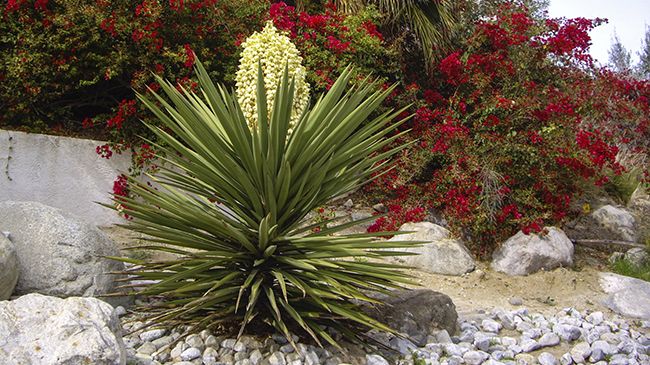 I am loving all these newly appreciated oils, butters, and herbs that curlies, coilies, and wavies are gravitating toward for their tresses and skin. Embracing your hair in its natural state has brought out the best in many of us as we enjoy what the earth has to offer to care for our bodies. It is no wonder we see so many naturals with gorgeous tresses as they connect with home grown goodness. I love it and yucca has recently sparked my interest. Yucca is a plant which grows in the Southwestern deserts in the United States and some parts of Mexico. It looks similar to the aloe plant with its spiky leaves. Yucca is a genus of perennial shrubs and trees in the Asparagaceae family. Yucca root is high in vitamin C, dietary fiber, potassium and folate. The various types of yucca are widely utilized in alternative remedies in Native American health solutions. According to Skin Care Guide, it is widely used as a remedy for hair loss or hair thinning. It is not a cure for baldness but the root extracts will stimulate the scalp. The ingredient is most effective as a scalp treatment because it contains saponins, which are cleansers that also reduce inflammation, itchiness, and dandruff that some suffer in their scalp. It is not recommended for long-term use because it can cause skin irritation and as always consult a physician before trying alternative methods for hair or scalp ailments. If you are not a DIY’er or just would rather purchase this wonder root already in a product here some popular ones to give a try.
I am loving all these newly appreciated oils, butters, and herbs that curlies, coilies, and wavies are gravitating toward for their tresses and skin. Embracing your hair in its natural state has brought out the best in many of us as we enjoy what the earth has to offer to care for our bodies. It is no wonder we see so many naturals with gorgeous tresses as they connect with home grown goodness. I love it and yucca has recently sparked my interest. Yucca is a plant which grows in the Southwestern deserts in the United States and some parts of Mexico. It looks similar to the aloe plant with its spiky leaves. Yucca is a genus of perennial shrubs and trees in the Asparagaceae family. Yucca root is high in vitamin C, dietary fiber, potassium and folate. The various types of yucca are widely utilized in alternative remedies in Native American health solutions. According to Skin Care Guide, it is widely used as a remedy for hair loss or hair thinning. It is not a cure for baldness but the root extracts will stimulate the scalp. The ingredient is most effective as a scalp treatment because it contains saponins, which are cleansers that also reduce inflammation, itchiness, and dandruff that some suffer in their scalp. It is not recommended for long-term use because it can cause skin irritation and as always consult a physician before trying alternative methods for hair or scalp ailments. If you are not a DIY’er or just would rather purchase this wonder root already in a product here some popular ones to give a try.
Original Moxie Get Clean! No Foam Shampoo
Water, aqueous extracts of neem, turmeric root, St. John’s Wort, red sandalwood, and yucca glauca**(yucca”> root create a no foam shampoo free of parabens, silicones, and sulfates. This shampoo takes a gentler approach to cleansing and removing dirt without disturbing your scalp’s natural balance.
Desert Essence Jojoba Strengthening Conditioner
If you are an oil lover then you will like enjoy this conditioner! Not only is it moisturizing but it will strengthen your curls with its keratin amino acids, hydrolyzed wheat protein, and hydrolyzed wheat starch.
SheaMoisture Yucca & Baobab Anti-Breakage Masque
Deionized water, shea butter, coconut oil, mango seed butter, avocado oil, olive oil, aloe barbadensis leaf extract, ammonium salt (conditioner”>, and yucca filamentosa extract make up this deep penetrating masque for fine hair. Full of strengthening and moisturizing properties, your hair will feel healthier.
Desert Essence Coconut Shine & Refine Hair Lotion
This hair lotion is chock-full of natural love! If you are looking for moisture, this is your go-to! The ingredients include water and glycerin (humectant”> for moisture and hydrolyzed soy protein, hydrolyzed wheat protein, and hydrolyzed wheat protein for strength. Wondering about slip? Not an issue, as this contains coconut oil and safflower oil.
Do you use products with yucca?
Photo courtesy of Lost In Curlation
Aloe vera, aka the “wonder plant”, is a short-stemmed shrub with succulent leaves full of beneficial properties that have been treasured throughout our history. It is used in food, cosmetics, food supplements, herbal remedies, and hair products. It is a medicinal plant that can be grown in most climates and is often times found in many homes as a fix for minor burns, sunburn, frostbite, psoriasis, and even cold sores.
Aloe vera is amazing on our curls, coils, and waves. It promotes hair growth and adds strength and luster to your strands while retaining moisture. It also alleviates itchiness and dryness and soothes inflamed and sensitive scalps, reduces dandruff, and is a great conditioning agent. You just cannot go wrong with adding aloe vera juice to your hair care regimen. Many use aloe vera gel or aloe vera juice to create DIY cleansers, conditioners, and styling aids, but if you are not the DIY’er than you may want to gain all the benefits of the “wonder plant” through some highly moisturizing products below.
Top 15 Products with Aloe Vera
Finding information about this ultra-secretive, uber exciting, exclusive line is not an easy task so I shimmied my nosey self to my nearest Target to get the scoop. This new line by Clairol is divided into two collections: the Moisture Collection and Volume Collection. The Root Clarifying Shampoo stands alone. The packaging is earthy, the names sound inviting, and the infusions look amazing. The shampoos and conditioners have pumps (a serious plus”> and I must say this line has me quite intrigued.
The Moisture Collection
The shampoo is silicone, parabens and mineral oil free and boasts of imparting moisture while you delight in the aroma of apricot. The paraben and mineral oil-free conditioner has water, fatty alcohols, conditioning agents, silicones, and fragrance as the first ingredients so not the best for the all-natural lovers but certainly not the worst, as it will provide the slip necessary for removing tangles and adding softness and shine. There is also a paraben and mineral oil free hair mask to round off this moisture collection.
The Volume Collection
This collection is infused with kiwi fragrance, and just like the shampoos and conditioners in the moisture collection we see the shampoo is absent of silicones, parabens, and mineral oil. This collection is about giving your hair life full of volume and movement. No hair mask in this trio but rather a hair thickening treatment that is free of parabens, mineral oil, and preservatives.
The thickening hair treatment captivated me with the instructions: “Use Daily. Apply to wet or dry hair. Spray 15 pumps at the roots to cover your scalp from the ear line up. Massage in with fingertips.” What can this magic product do? I am very interested to find out!
Root Clarifying
There is only one product in this category: a clarifying shampoo that is pretty in pink, and an earthy pink at that. This clarifier is infused with strawberry ginger fragrance and is free of parabens, silicones, and mineral oil, and like all clarifying shampoos it promises to remove all buildup from your tresses.
Price
The prices seem reasonable with $9.99 for all the shampoos and conditioners which are in 10.1 oz. bottles and the thickening hair treatment is $12.99 for 6.3 oz. Right now they are buy one get one 50% off through the Oct. 11! This is the perfect time to check out one of the collections and if you have a red card from Target you will get that extra 5% off so honestly, what are you waiting for?
I am so interested in trying this new hair food, and if I had to choose I would try the moisture collection.Have you seen it or even tried it yet?
The initial BC is usually seen as a rite of passage to accepting the natural aesthetic of your curls and coils, but the second or even third chop? What is the motive? Most would assume that women who choose to BC more than once are fixing damage from heat, chemicals, or neglect (and we all know what happens when you assume, right?”> It is assumed more often than not but who says the second BC has to be a result of a mishap or confined to a negative label?
By now many should be understanding that every natural is unique and defines herself in her own right, so assuming that the only reason to BC a second time around is for damage is inaccurate.A second BC for damage is a reality but as we see below, it is far from the norm.
AfricanExport did her second big chop in July, which is fierce if I might add. She gets in-depth in the video below discussing the cut and why she did it, while also explaining how she feels about her hair. She does not covet long hair nor does she feel she needs to accommodate others on her hair choices. She explains her reasons eloquently below:
“Thirty-year old…plus, mother, wife, getting my fitness on, I think I was due some change.”
Rachel Stewart, the eclectic and original jewelry designer of Rachel Stewart Jewelry, is an artist that most naturals already know and love. Her funky style and pieces have made her famous and if you have not heard of her you need to check her out. The ones that do know and love her also know she has a ritual with her hair that some would find strange. She shaves her head around every two years and it has nothing to do with damage. She has been natural over 25 years and she just likes short hair. She also knows it grows back and is not worried about what others think about her hair choices.
Even our own Priscilla decided to BC earlier this year in March. As she was kind of nervous in the beginning, she admitted she did not know why since she had done this before and she realizes, “I don’t think I’m a long natural hair type of person.” Long hair or growing out hair is not on everyone’s agenda. Priscilla not only went ultra short, she went ultra blonde! Her confidence soared in the self-acclaimed introvert and with a cut and color as sexy as hers, it only makes sense.
I am not going to lie…I am so envious of AfricanExport’s sexy hair (pictured above, on the far right”>. I miss when my hair was that short and could stand up in the front like hers. I loved it and now realize how much I miss it. I know I would have more fun with my hair short the second time around, and although I do not plan on doing another BC anytime soon, who knows what 2015 will bring? BC’s are not just for the newly natural or the natural fighting damage. It is for any natural who wants a change, loves short hair, or finds it works better with her personality and lifestyle. Rock whatever feels good and right to you ladies, and never feel your hair has to appease anyone but yourself. BC or not to BC…that is the question and only you know the answer.
Have you done a second, third, or fourth big chop?
I have two videos below with different curl patterns, so naturals of all coils and curls can see just how creative and simple this look is. First off is Samirah Gilli. She started on three-day-old chunky twist out that looks straighter around the roots but still has definition in the middle and ends of her hair. More time is spent on the front bun as she concentrates on edge control and smoothness.
The second tutorial features Shekinah Shazaam and although she does not mention what she started on, it looks like an old wash and go. Shekinah has thicker and denser hair with tight pencil-sized coils. More time is spent on the back to create fullness with emphasis on curl definition and volume. FYI, having defined curls is never a requirement.
The Perfect Ninja Bun
Tools and Products
- Rat tail comb
- Denman brush
- Whipped butter
- Eden BodyWorks Edge Control
- Favorite oil
- Ouchless barrette
Directions
*Samirah starts on chunky twist out.
- Release your chunky twists and fluff to your desired fullness. Remember that the more you fluff, the less definition.
- Add oil or water to hair for shine and to revitalize.
- Split hair into two sections with the rat tail comb. You want the front to be 1/3 of your hair and the back section to be 2/3.
- Secure back section into loose ponytail.
- Add Edge BodyWorks Edge Control to slick down edges.
- Brush edges back and place into a front ponytail.
- Create a bun by pinning bobby pins around the ponytail base.
- Release the back ponytail and fluff.
Watch
Follow Samirah Gilli here:
How I Ninja Bun
Tools and Products
- Spray mixture
- Comb
- Scrunchies
- Holding styler
- Moisturizer
Directions
- Section the hair from ear to ear giving equal amounts to both the front and back sections.
- Place each section in scrunchies.
- Spray or apply moisture to back section to revitalize hair.
- Fluff and stretch hair to give fullness.
- Accentuate front with waterfall curls on the sides near temple.
- Pull to stretch front section and fluff curls.
- Apply a holding product for smoothness.
- Create a loose puff with a hair tie and apply moisturizer to revitalize curls.
- Mold another bun with another hair tie and tuck edges under to give bun fullness and volume.
Watch
Follow Shekinah Shazaam here:
Natural hair is fun so please do not let me scare you. It is fun, exhilarating, and liberating all at the same time. Now, there are moments when your hair is working through something and has not made you aware. That would be year two as you begin to feel you have a take on what is actually going on. It is different for everyone but with naturals taking two clear and distinct paths there is a division. You have the BCs and the transitioners.
Big chop
With the emancipating nature of a big chop you feel like a new woman as soon as the relaxed ends disappear. Despite feeling released you are not exactly…free from the effects of chemicals. The line of demarcation may not be your issues but as your hair gets used to the lack of relaxers there may be some wonkiness going on in that first year of going natural.
Most naturals feel that once they hit year two most of the problems may begin dying down but that could be premature thinking. Your natural hair and you have only dealt with one another for one round of seasons and as that first one rolls around again there may need to be some adjustments made. The texture will be different from a year ago and that product that your hair seemed to responds so well with may be the evil villain this time around. Confusion? Yes, for the natural but as your hair is growing and thriving, it has different needs so checking labels and listening to your hair is crucial.
You are probably out of the TWA stage and then come styling issues as your go-to style may have already went! Checking out YouTube videos are avenues to finding new styles since your hair is at a new length and will do cooperate as it had while shorter.
Transitioners
Transitioners are all about hanging on with grace and flair. You not feeling the BC? No worries! Rock both textures like a #hairboss. There are some strange yet common issues that most transitioners face like the line of demarcation or the point where your two textures meet. It is extremely fragile and may even look different from your relaxed hair or natural hair.
As you become accustom to your hair’s ‘look’ the first year of naturalness may have you feeling stronger by the end of year one, but by year two your hair may be trying to sing a different tune. Is it time to take off the remaining relaxed ends? Probably so. I have heard of some transitioners going two years or longer but many tire of the process and cut BC within year one. Whenever you choose to ditch them becomes a time to learn your hair’s new look and needs.
Working with two textures is not the same as working with one and as you have learned how to care for your hair with both during the beginning of your journey, now your tresses may require different styles, routines, products and mindset. Year two brings less stress of breakage if you have found the right techniques, but it does bring questions on styling options. No longer masking one texture while working on another, you have one job to do and that is just figuring out what your hair needs. Many transitioners protective style when rocking both textures but once down to one, are you ready for dealing with your hair unprotected?
YouTube will become your best friend. Decide if it is time to BC or transition longer. Whether you BG or transition, year two can bring new challenges and concerns, but if you realize they are arriving, you can better prepare and combat any falls or frustrations. Change keeps life fresh and exciting and the adjustments during the natural hair journey should stay positive. So guess what? Embrace it, take each challenge as a course for learning about maintaining healthy hair and grasp the need for listening to your tresses. The terrible twos can be pretty sweet if you know what to look for and what to expect.
What issues have you noticed during your terrible twos?



